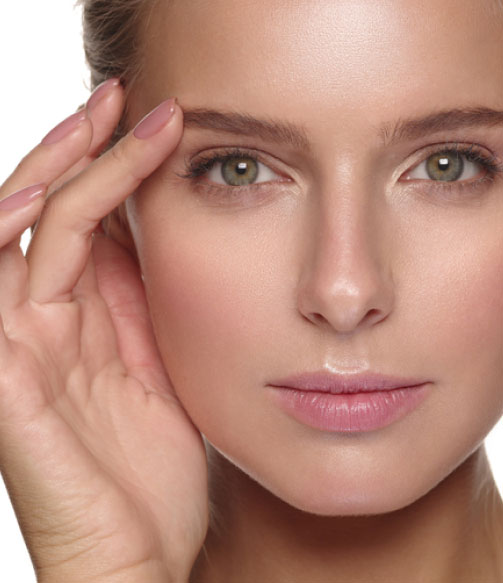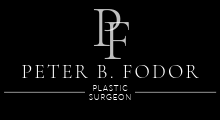Skin Resurfacing
Skin Resurfacing Treatments
Skin Resurfacing Treatments
Facial rejuvenation surgery is designed to reduce excess tissue and fat, re-drape skin and improve facial contours, but it is not effective in treating fine wrinkling of the skin or improving skin texture. For this reason, Dr. Fodor may recommend one or more skin resurfacing procedures to complete a patient’s facial rejuvenation.
These procedures may also be performed in conjunction with other nonsurgical cosmetic procedures such as Botox injections or dermal facial fillers, or skin resurfacing can be performed as a stand-alone procedure for patients of almost any age who seek improvement of their skin’s appearance.
Today there are many options for skin resurfacing treatments, from deep to superficial. First, though, it is important to understand tat skin resurfacing cannot achieve the same result as, for example, a face lift. Some types of resurfacing treatments may offer skin tightening effects, but these are generally minimal compared with the results obtained through surgical procedures.
The type of treatment recommended for you will depend primarily on the condition of your skin. This, in turn, may be determined by your heredity and by lifestyle factors including sun exposure, nutrition, smoking, alcohol consumption, and your daily skin care regimen.
When visible signs of skin damage appear, resurfacing treatments offer a range of solutions. Some types of skin procedures have little to no downtime, while others may require a lengthy recovery and you may experience persistent skin redness for an extended period of time. Skin resurfacing treatments may be superficial or deep. They may target only the upper layers of the skin, removing dead cells (exfoliation) and allowing skin cell regeneration, or they may penetrate too deeper layers of the skin to stimulate changes beneath the skin’s surface.
- Lighter treatments are usually most appropriate for younger skin or skin that has minimal sun damage, called photo-aging.
- Deeper treatments may be necessary to achieve dramatic results in more mature skin or skin with moderate to severe skin damage.
Treatments that target the collagen deep within the dermis while bypassing the outer skin layers involve less recovery than other deep treatments, but visible results are not as significant. Most resurfacing treatments are performed on the face, but some treatments can be used on the neck, chest, hands, and other areas of the body.
Skin resurfacing methods can be classified into several categories:
- Chemical Peels
- Mechanical Abrasion Treatments
- Lasers
- Light-Based Treatments

Length of Procedure
Chemical Peels – From 10 minutes to two hours.
Dermabrasion – Generally from 15 – 45 minutes.
Anesthesia
Chemical Peels – Depending on the strength, from none, to local anesthetic with or without intravenous sedation, or general anesthesia.
Dermabrasion – Depending on the severity of the problem and the extent of the treatment, dermabrasion can be performed under local anesthesia, numbing spray, sedation (twilight) anesthesia, or general anesthesia.
Recovery
Chemical Peels – Skin color from mild pinkness to severe redness, scabbing, peeling and swelling, depending on the strength of the peel; from 24 hours for light peels to several weeks or longer for deep peels.
Dermabrasion – Slight stinging or tingling subsiding almost immediately following microdermabrasion; moderate discomfort with redness to swelling for up to 14 days following dermabrasion.
Chemical Peel
Chemical peels use chemical acid solutions of varying strengths that are applied to the skin, most commonly applied to the face, to improve appearance and texture. Chemical peels may be performed alone or in combination with other procedures and treatments to provide the most drastic results. Depending on your individual goals the types of chemical peels used will be determined. Chemical peels are considered noninvasive and offer minimal risks and side effects compared to other procedures and treatments. Discuss your options and goals with Dr. Fodor to determine the right treatments for you.
Dermabrasion
Dermabrasion is a noninvasive cosmetic medical procedure used to drastically improve the skin’s texture after as little as a single treatment. More aggressive than microdermabrasion, when performed by an experienced cosmetic surgeon patients can reasonably expect visible reduction in wrinkles and scars and drastic improvement in overall skin texture.
Individuals looking to see drastic results without surgery may opt for dermabrasion treatments by Dr. Fodor. Ideal for drastic improvement of skin texture which may be needed due to scars from acne, accidents, or previous surgeries and those looking to improve the appearance of fine wrinkles such as those around the mouth and sun damage. Dermabrasion is an excellent option for individuals looking for improvement and with reasonable expectations and goals that can’t be achieved through less aggressive exfoliation and microdermabrasion methods.
Your Favorite Version of You Begins Here
Call today to schedule your confidential consultation with Dr. Peter Fodor to discuss your cosmetic goals.
